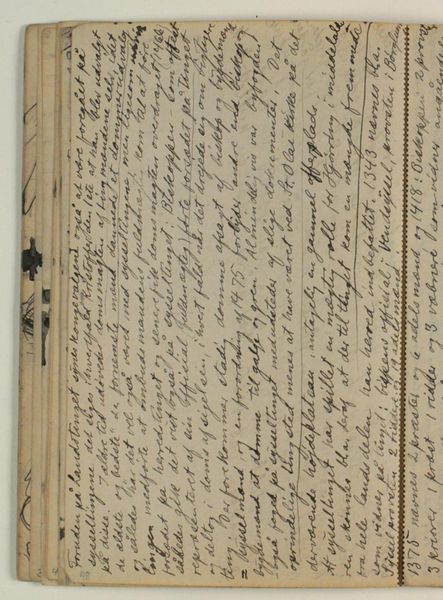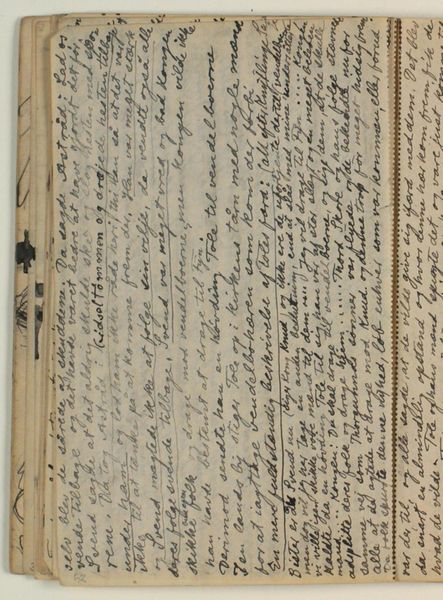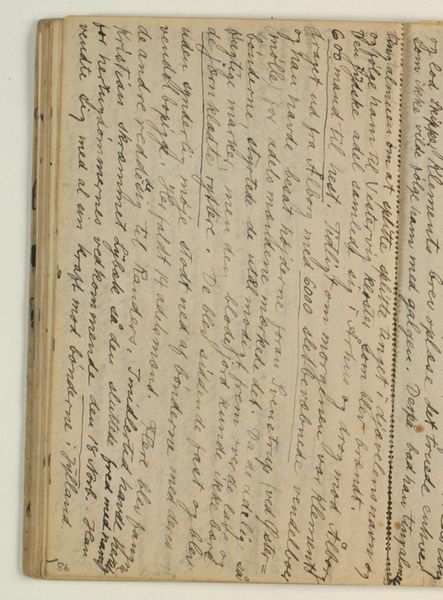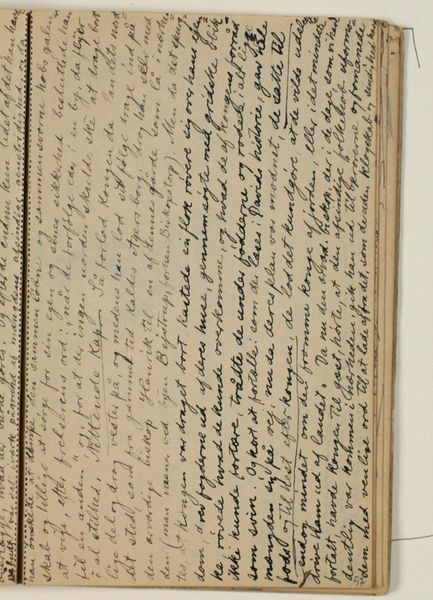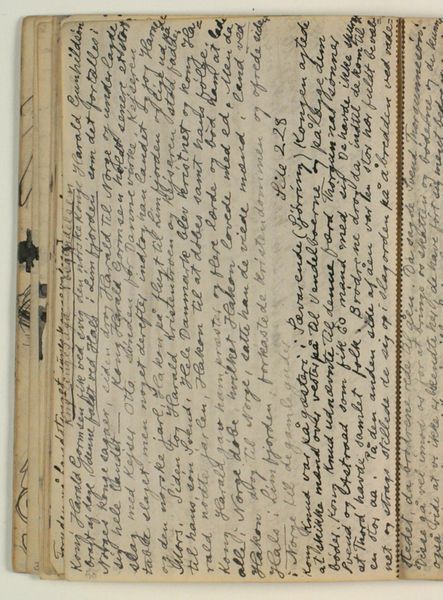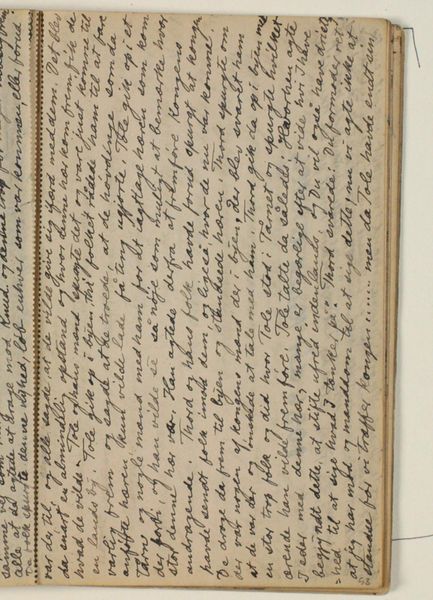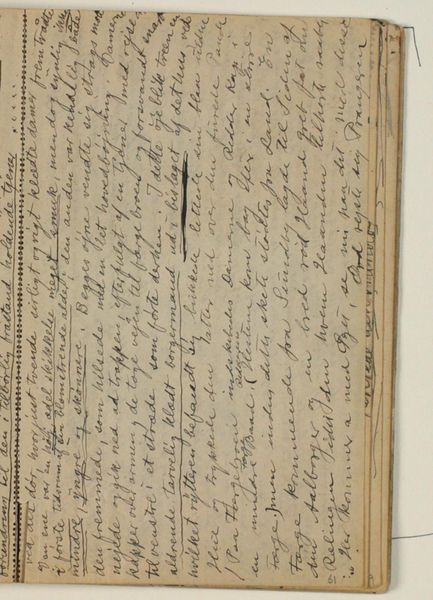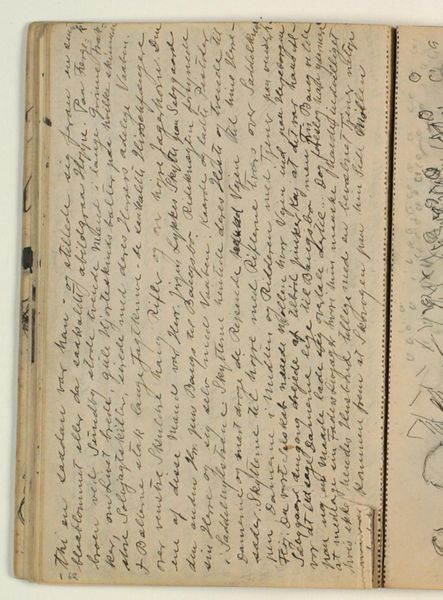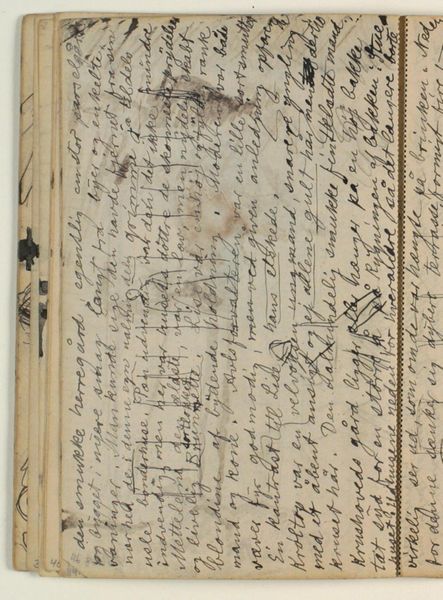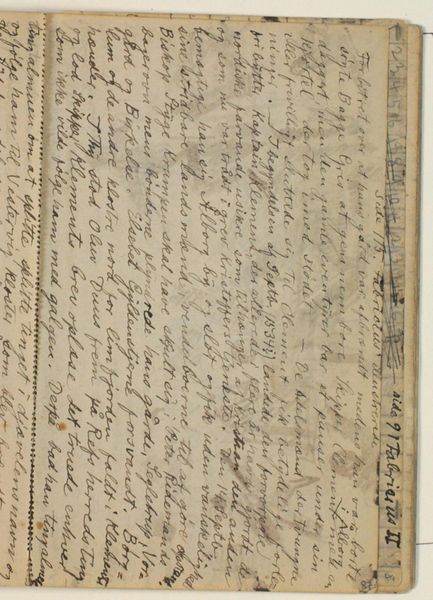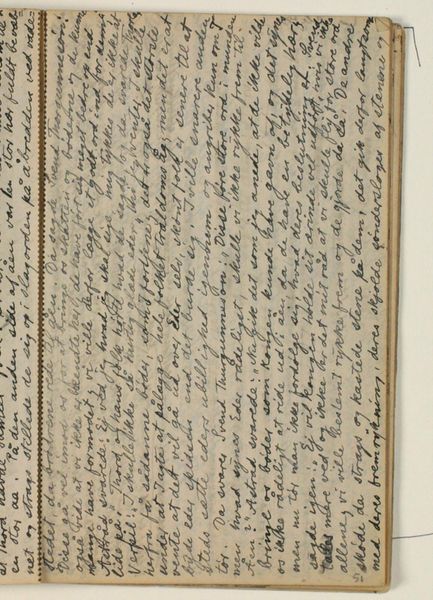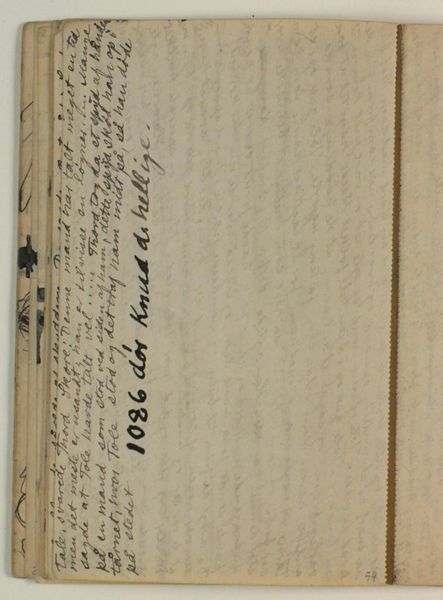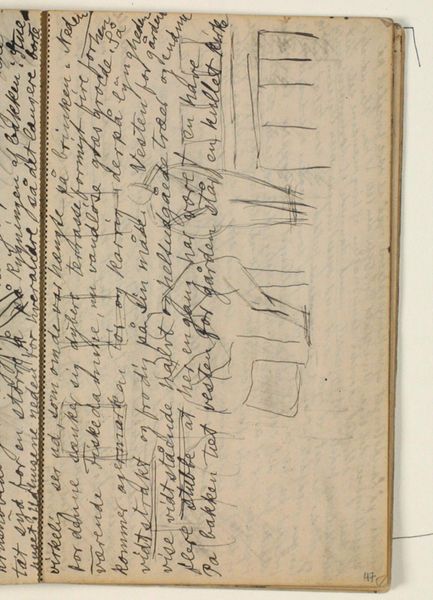
Uddrag af Ælnods saga om Knud den hellige i Vendsyssel 1932 - 1935
0:00
0:00
drawing, paper
#
drawing
#
paper
Curator: Let’s take a look at Niels Larsen Stevns’ work from between 1932 and 1935, "Uddrag af Ælnods saga om Knud den hellige i Vendsyssel," currently held at the SMK—Statens Museum for Kunst. The work employs both drawing and paper as its media. Editor: My initial impression is one of… closeness. It feels intimate, like stumbling across someone's private diary. The density of the script, packed tightly, evokes a sense of fervent, almost obsessive dedication. Curator: Absolutely. Stevns’ work dives deep into cultural memory. The subject matter stems from the "Ælnods saga," centered around King Canute the Holy—a figure imbued with deep religious and historical significance in Denmark. The drawing functions almost like an illuminated manuscript page, resurrecting symbols and narratives crucial to national identity. Editor: Fascinating. The sheer labor implied in such dense, hand-rendered text is striking. Looking closely, I see the variance in the line weight and pressure; it seems like an almost meditative act. Was Stevns particularly interested in reviving or exploring certain calligraphic traditions through this medium? Curator: Yes, certainly. We should consider the context of the 1930s; Denmark was navigating complex cultural and political shifts. Here, Stevns uses these older narratives of piety and martyrdom to subtly reinforce national values during that era. There’s the recurring symbol of Canute as a figure for resilience and righteousness. Editor: It feels very personal; perhaps an exploration through making of what those older symbols meant to him in particular. And perhaps also about the act of transcribing and preserving knowledge, as labor itself taking on spiritual dimensions? Curator: It could definitely speak to that. There's a psychological dimension to it as well. This return to historical foundations hints to that search for identity, or grounding, within oneself. Editor: I appreciate you highlighting that intersection—of personal action, the cultural weight of symbolism, and this incredible density. I’m leaving here with a newfound admiration for its making. Curator: Precisely. Stevns manages to compress immense cultural history into a deeply personal visual form; that tension is what truly resonates with me.
Comments
No comments
Be the first to comment and join the conversation on the ultimate creative platform.
